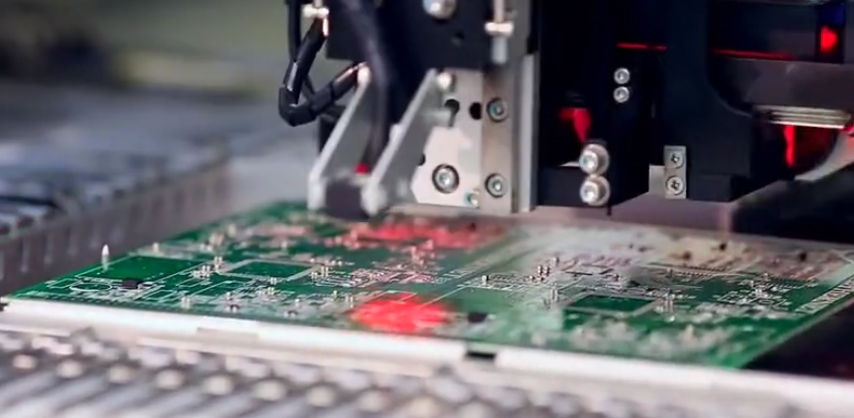Welding is a critical process in metal joining and plays an essential role in the manufacturing of printed circuit boards (PCBs) and other electronic components. However, one of the primary concerns during the welding process is welding deformation, which can negatively impact the quality and performance of the final product. In the PCB industry, where precision is key, controlling welding deformation is crucial to ensuring that the PCB meets the required specifications. This article will explore various methods for controlling welding deformation, which can be applied to both PCB production and broader manufacturing processes.
Preheating and Post-heating Treatment
Preheating refers to the process of heating a workpiece to a specific temperature before welding begins. The primary purpose of preheating is to reduce the temperature gradient across the workpiece, which in turn helps to mitigate the risk of deformation during welding. By ensuring more uniform heat distribution, preheating can minimize stress concentrations and thus reduce the chances of warping. In some cases, post-heating treatment is also used as a complementary method to control welding deformation. After welding, the workpiece is subjected to controlled reheating at specific temperatures for a set period to release internal stresses and further minimize deformation.
At PCBYES, we integrate advanced preheating and post-heating technologies in our PCB fabrication processes, ensuring that each component maintains optimal shape and functionality throughout the manufacturing cycle.
Proper Fixtures and Positioning Tools
Using the correct fixtures and positioning tools during the welding process is essential for maintaining the stability and accurate positioning of the workpiece. Proper fixtures reduce the freedom of movement of the workpiece during welding, which helps to limit deformation. Additionally, correct positioning ensures the precision of the weld joints, reducing the need for post-welding corrections. Accurate placement of components on the PCB is critical to ensuring that the final product meets the performance requirements, making the use of appropriate fixtures a fundamental part of PCB manufacturing.
Control of Welding Parameters
Welding parameters, including current, voltage, welding speed, and the choice of welding materials, significantly impact welding deformation. By carefully selecting and adjusting these parameters, manufacturers can control the heat input during welding, which directly influences the likelihood of deformation. For example, reducing the welding current can minimize the thermal cycle, thus lowering the risk of warping. Choosing appropriate welding materials and filler materials also plays a role in improving welding quality and preventing excessive deformation.
For the manufacturing of PCBs, PCBYES ensures that welding parameters are optimized according to the unique requirements of each project, ensuring high-quality, precise, and reliable PCB assembly.
Welding Sequence
The sequence in which the welding process is carried out has a significant impact on welding deformation. A carefully selected welding sequence can help reduce heat accumulation and prevent stress concentration. Typically, welding from the inside out or from the center to the edges can minimize the potential for deformation. Managing the sequence allows for better control of the heat input, preventing unwanted thermal effects that could alter the PCB's structure.
Monitoring and Tracking Control of the Welding Process
Modern welding technology allows for real-time monitoring of welding parameters and quality. Utilizing advanced systems such as laser sensors, visual inspection systems, and automated control mechanisms can enable continuous feedback during the welding process. This allows immediate corrections to be made, ensuring that the process stays within optimal conditions to prevent deformation. In PCB manufacturing, precise monitoring ensures the integrity and reliability of each PCB assembly, preventing issues that could affect product performance.
Post-weld Heat Treatment
After the welding process, some components may require additional heat treatment to relieve residual stress and reduce deformation. Heat treatment methods such as normalizing, tempering, and annealing are employed to adjust the microstructure of the material, ensuring that the final product remains stable. By controlling the heat treatment parameters accurately, manufacturers can significantly reduce welding distortion and improve the overall mechanical properties of the product.
For PCBs, heat treatment processes ensure that all components are positioned correctly and that the product is structurally sound, which is crucial for ensuring performance in high-frequency or high-thermal environments.
Use of Compensation Components
In certain cases, it may not be possible to completely avoid welding deformation, especially when manufacturing large or complex structures. To compensate for these deformations, designers may incorporate compensation components into the design of the PCB or the assembly. These components can be adjusted after welding to counteract any distortion that may have occurred. This method is particularly useful in the fabrication of complex PCB layouts or when special shapes are required for the PCB. Compensation parts help to restore the integrity of the design, ensuring that the PCB will still meet performance requirements even if some deformation occurs during the welding process.
Welding deformation is a common challenge faced in the manufacturing of electronic components and printed circuit boards (PCBs). However, through the implementation of various control methods such as preheating, the use of proper fixtures, monitoring welding parameters, and selecting the right welding sequence, it is possible to minimize deformation and ensure that the final product meets the required standards.
At PCBYES, we are committed to providing high-quality PCB prototypes and fabrication services, ensuring that our customers receive reliable and durable products. Whether your project involves a single-layer PCB or a multi-layer PCB with complex routing, our team of experienced engineers is equipped to handle all your PCB manufacturing needs with precision and care. We offer comprehensive solutions, including PCBA turnkey services, that guarantee optimal quality, performance, and cost efficiency.




